Keeping track of CO2 emissions can give travelers a new perspective. Can a 1,250km journey from Kyoto Prefecture to Shiretoko in Hokkaido Prefecture be done in just two days, with emissions limited to just 100kg? If our travelers make their goal, they'll be rewarded with a nature experience in a Natural World Heritage site. But if they exceed the set CO2 limit at any point during their journey, they'll be sent home immediately. Two students with very different views on the environment use various means of transport to make their way to their goal, facing unexpected obstacles and problems along the way. A 21st-century travel show that grapples with the global problem of CO2!
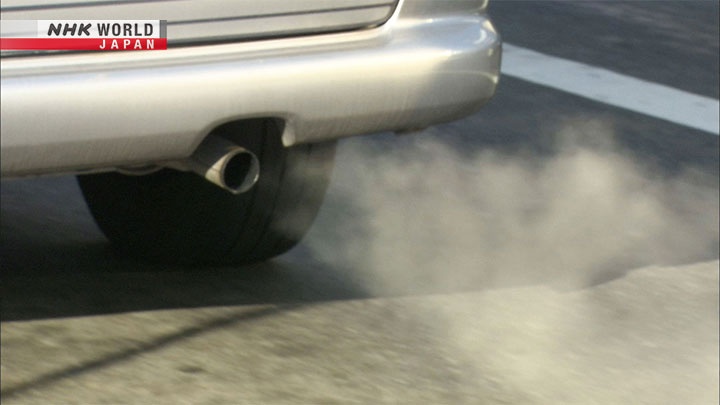
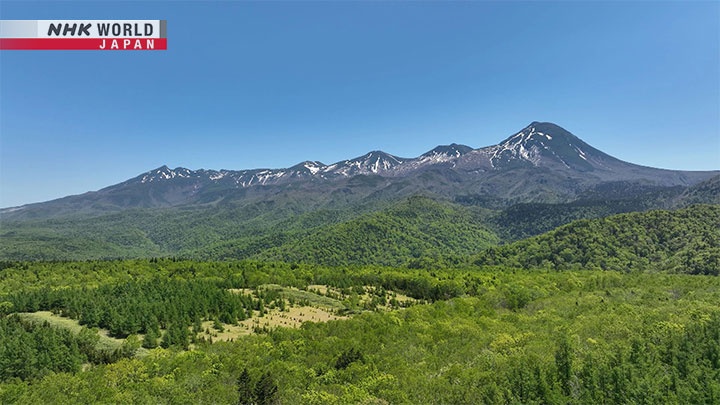
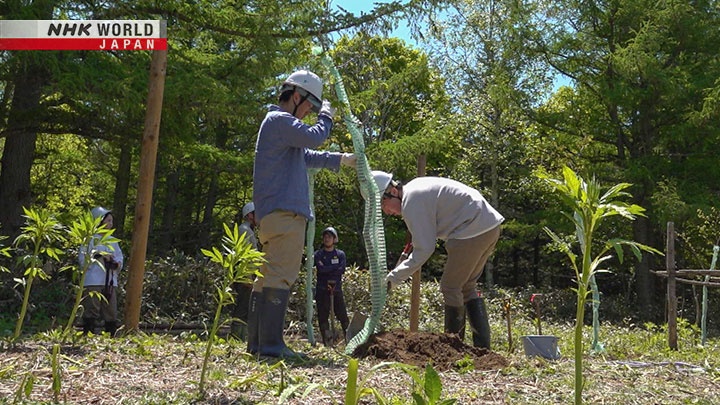
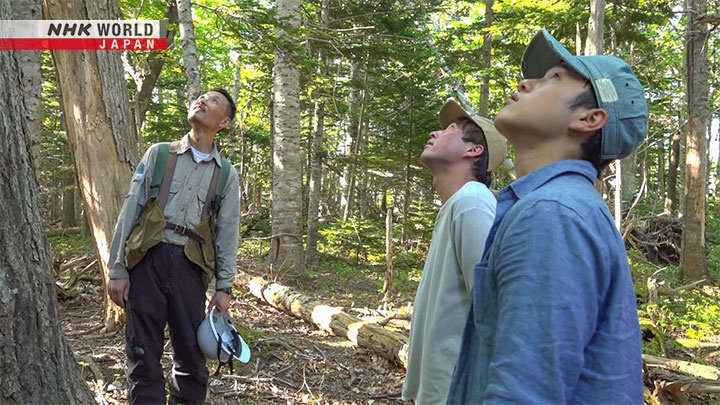
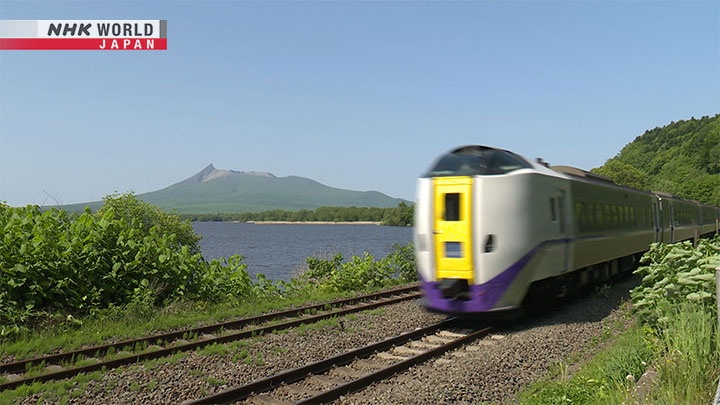

Transcript
From trains and airplanes...
to cars, transport is at the heart of any journey.
How beautiful.
On this show, our travelers cross Japan using all kinds of transportation.
So lovely.
But, they have a limit on CO2 emissions.
Rising carbon dioxide levels are one of the factors behind climate change.
All of us must consider how much CO2 we produce when we travel.
Gorgeous scenery...
as well as hot springs, and mouthwatering food await our travelers at their destination.
But if they go over their CO2 limit, the trip is over.
- No taxis.
- No taxis?
- We have to run.
- Wait, seriously?
We're close.
We can do it, just 10 km.
Two young travelers take on the challenge.
CO2 Journeys.
The trip begins in Kyoto, located in central Japan.
- "Good morning, hello."
- Hi, good morning.
Our two travelers have different levels of eco-consciousness.
- He already bought bottled water.
- Of course.
- I brought my own.
- Who wants to lug a bottle around?
Gotta do this.
I'm in trouble.
Yokoi is very eco-conscious, while Ono is largely uninterested.
The two form an unbalanced team.
Yokoi is part of a college group that promotes an environmental lifestyle.
He supports the increase in people using their own bottles.
He also helps host cooking classes that focus on minimizing waste.
This was the only waste.
Let's drink. Cheers.
Yokoi and Ono were classmates in high school.
Yokoi always has to encourage Ono to be better about sorting his trash.
If you don't recycle cans,
it's a huge waste.
You have to rinse them first.
It takes time. Such a pain.
- You taking that?
- Yeah.
- But it's burnable.
- It's paper.
- So burnable trash.
- I can recycle it.
I know what Ono's like.
He doesn't do anything
unless it benefits him.
Maybe it takes an extra step
or costs more.
But taking care of the environment matters.
He could do so much more.
Climate change is
a global problem.
But it can feel distant.
I know that Yokoi's right.
But sorting trash and recycling.
Does my doing that really
make a difference?
I know that CO2 is a problem.
But it just doesn't feel
like an urgent issue to me.
It's time for our travelers to find out where they're going.
"Take a look."
That's so far.
- Further than I thought.
- As far as it gets.
Shiretoko is a Natural World Heritage Site in Hokkaido.
It's 1,250 kilometers from Kyoto as the crow flies.
"Here are the rules:
Max 100 kg of CO2 per person."
100 kg?
Is that high or low?
By volume, that's around a hundred thousand 500-mililiter plastic bottles.
Let's look at the rules for this journey.
One: CO2 emissions from transportation must total 100 kilograms or less per person.
Two: The trip must be completed by sunset on the second day.
Three: No internet use is allowed.
Can they reach their goal within the set time, and stay under their CO2 limit?
They discuss their transportation options as they walk.
We could totally fly. It's fine.
Why not use what's convenient?
The longer we fly,
the more fuel we'll use.
We should limit our flying.
Go by land as far as we can.
That's gonna be such a pain.
How will they get to the northern island of Hokkaido?
Yokoi suggests taking the bullet train.
Ono suggests taking a flight from Osaka.
First, they take the subway to the local hub of Kyoto Station.
Will they take the train to the airport, or the bullet train?
A bullet train to Tokyo.
Yokoi's suggestion wins out.
Here we are.
We'll use the Japanese government's findings to calculate the travelers' CO2 emissions.
Although it varies by rail company and train model,
rail journeys create approximately 17 grams of CO2 per person, per kilometer.
How will this choice work out?
It's lunchtime.
What did eco-conscious Yokoi choose?
I chose grilled mackerel.
Paired with seafood rice.
I wanted to avoid meat.
Fish require less food
and energy to produce.
On the right is Ono's lunch.
Beef tongue?
Yes, because it's delicious.
It takes over two hours to reach Tokyo.
Now they'll change to a bullet train to Hokkaido.
The landscape's quite different.
It's a ten-hour rail journey from Kyoto University to Hakodate, covering 1,400 kilometers.
We're out of the undersea tunnel
and in Hokkaido.
We made it to the island.
- "Final stop, Shin-Hakodate Hokuto."
- So cold.
I'm in short sleeves.
Why is Japan so long?
Make it shorter.
How much CO2 has each of them generated so far?
- "Ta-da."
- 23.9 kg.
Not bad, that gives us
a nice cushion.
The train was worth the sore butt.
This isn't a trip, it's a trek.
They decide to spend the night.
They can do what they like as long as they stay under their CO2 limit.
They decide to enjoy the famous night-time view from Mt. Hakodate.
- There. Mt. Hakodate cable car.
- On the left.
- We could hike up instead.
- Oh no. Nope, absolutely not.
No hiking.
They use the cable car to reach the summit.
- The air's so clean.
- Wild.
- Oh wow.
- Amazing.
It's so beautiful.
I'm so glad we got to see this.
Electricity is vital to travel and everyday life.
But it does produce CO2.
Good morning.
Since they're not allowed to use the internet, they're given a book of timetables.
They have two choices to get closer to their goal.
The first is to fly from Hakodate to Shin-Chitose Airport, then to Memanbetsu.
Or, they can take the train from Hakodate to Shiretoko-Shari, via Sapporo.
Which is better in terms of time and CO2 levels?
Sapporo first.
Let's look on the train.
They choose the train because it produces less CO2.
But.
I just looked at the timetable.
- The 2:53 PM bus is the last one.
- 2:53?
I meant it leaves at 4:53.
A plane might be better.
The plane.
Yokoi's calculations using the timetable show that by the time they arrive at Shiretoko-Shari Station,
they'll have missed the last bus to the Nature Center, their goal.
So fly from Chitose Airport?
- Fly from Chitose to Memanbetsu?
- We'll get there in time.
They change their plans and get off at Shin-Chitose Airport, ready to fly.
Hokkaido has great wind
and solar energy potential.
So beautiful.
It takes three and a half hours to reach Shin-Chitose Airport.
Time to eat.
Eco-conscious Yokoi shares a few techniques.
I don't need a wipe, thanks.
Yokoi washed his hands and refuses a wipe.
Then, he spends a few minutes rummaging in his bag.
He takes out the chopsticks included in yesterday's lunch.
- I don't need these.
- Thank you.
It helps cut down on waste.
Don't take items you don't need.
That means less carbon,
and less trash.
It's a great idea, but
you take ages finding stuff.
Is it really more efficient
or worth it?
I just need to pack better.
The two have very different perspectives.
Time to check out their plane.
There one goes.
Look at it fly.
Hearing those engines
so close is overwhelming.
You can literally hear them
burning fuel.
It's a big hunk of flying metal.
Of course it uses
loads of electricity.
- Fuel.
- Yeah, fuel.
Liftoff.
When traveling by plane,
an average of 98 grams of carbon dioxide is produced per person, per kilometer.
Look. There's still snow
on the mountains.
Oh yeah.
It takes just 40 minutes to reach Memanbetsu Airport.
Their rail journey so far has generated 28.6 kilograms of CO2.
Their flights: 34.7 kilograms.
Hello.
Way faster than the train.
The same trip would be
2-3 hours by rail.
We did it in 40 minutes.
Flight and innovation win.
True, but it used a lot of CO2.
They start to look for ways to reach their goal.
They spotted a problem just before getting on the plane.
I don't know.
At Shin-Chitose Airport, they asked how to reach the nature center from Memanbetsu Airport.
Looking at the timetable, these
are the only direct routes.
Utoro Onsen bus stop at 6:10 PM.
- It stops there?
- It does.
We'll need to get a taxi.
Even if they get a train and a bus from the airport...
they'll be stranded five kilometers from their goal.
And they'll only have 35 minutes to complete their journey.
So they try to book a local taxi.
Are there any other local
taxi companies? No?
- No taxis.
- No taxis?
- Not one?
- Not one.
- They close at 5 PM. We have to run.
- Wait, seriously? Run 5 km?
How will they make it to their goal?
We could rent a car...
They spot a car rental counter at Memanbetsu Airport.
Can we pick it up here?
- We're out of cars.
- I see.
It seemed their luck had run out.
But then...
When do you need it?
2:30 PM today.
- We might have something.
- Any car will do.
One car is available...
but it runs on gasoline.
I'd have liked options.
Like a hybrid or electric car.
I agree, yeah.
I'd have preferred lower
carbon emissions.
They set out for Shiretoko Nature Center.
A standard car produces around 130 grams of CO2 per person, per kilometer.
Since they have a car, they decide to stop at a famous tourist spot en route.
That's amazing.
I only saw glimpses from the car.
Märchen Hill, Memanbetsu.
Glad we stopped.
Now it's like a real road trip.
That's the train we almost caught.
- Check out the station.
- Wow.
We'd have missed this view.
Ready?
- Oh wow.
- All the way to the horizon.
- It's totally straight.
- How far does it go?
Up to and over the mountain.
This is incredible.
We've come so far.
After sightseeing, sunset is approaching.
We can do it, just 10 more km.
The sun's still above the horizon.
- It's like a postcard.
- So beautiful.
Their sunset time limit is approaching fast.
Can they make it?
"You've arrived."
We made it, at last.
They arrive at Shiretoko Nature Center with just five minutes until sunset.
- I'm wiped.
- That was exhausting.
They made it, but did they manage to stay under 100 kilograms of CO2?
"Each of you used this much."
We did it.
"77 kg."
Thank goodness.
The rental car produced 13.7 kilograms of CO2 per passenger.
That makes a total of 77 kilograms, under their limit of 100.
100 kg of CO2 is
100,000 plastic bottles.
We used 77,000 bottles,
so it's like we saved 23,000.
I can visualize
those 23,000 bottles.
It's a small, very real joy.
We used a rental car for a while.
But we were able to plan
and see some of the sights.
We saw Hakodate all lit up and
enjoyed the landscape en route.
Figuring it out as we went was
a big part of the fun.
Our two travelers reached their goal within the set limits.
Their reward is a nature experience.
You produced CO2 while
traveling yesterday.
Now you'll help nature reabsorb it.
Join us on a forest
planting expedition.
Kusano carries out planting and sapling management as part of his work restoring Shiretoko's forests.
Beginning in the early 1900s, Shiretoko's trees were cut down and the land used for farming.
But around 50 years ago, the land was bought back thanks to donations,
and the forests are now being restored.
An area of land about 8.6 million square meters in size is currently being converted back to woodland.
It's made a visible difference.
These two city boys have never planted trees before.
Their saplings were grown from seeds harvested from the woods.
We'll plant these tall saplings.
How old do you think they are?
Maybe seven years?
They're over 20.
I was born in 2000. Same age.
- You've got a bond.
- Like classmates.
- Heavy.
- Carry it together.
So heavy.
The first challenge they face is providing a support.
They install a tough pillar that will keep the tree from being blown down.
No breath to talk.
Hang in there.
It's hard.
My arms...
There's still another to go.
A second helping.
Next, the tree is wrapped in netting to protect it from being eaten by deer.
At last, the tree goes into the earth.
The hard work continues.
It takes 3-4 years for this tree
to be properly rooted.
Careful preparation now
helps it grow better later.
I'm glad to see you taking
such good care of the saplings.
It's so much work to plant just one.
It'd be a shame to let it die
after 20 years of work.
It takes half a day to plant this single tree.
How much carbon dioxide will it absorb?
In a year, it can absorb 12 kg of CO2.
12 kg in a year.
Each of them produced 77 kilograms of carbon dioxide over their two-day trip.
A single tree can only absorb 12 kilograms a year.
Reabsorbing CO2 is a process.
It doesn't happen overnight.
This drove home
how long it takes.
Today's saplings will one day
become a forest.
But it'll take 200-300 years.
I now see it's so easy to produce,
and so hard to reabsorb.
We ran out of time and got a plane.
I still don't think that's wrong.
The key is to think how
what we do affects the planet.
Can we do it a different way?
Then we should choose
the low-carbon option.
Seafood bowl with sea urchin.
So good.
This feels amazing.
The more we chase convenience, the more CO2 we produce.
Why are we creating CO2, and how much do we produce?
Focus on what's possible.
Our travelers gained new perspective on this trip.